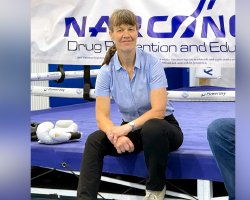How Can We Help Twenty Million Drug Addicts Get Clean by 2025?

This morning I went online and typed into Google, “How can we address addiction in America?” As I viewed the results, the first thing that came to mind was how many different strategies different groups were talking about. It seemed like every major health organization had their own stance on how to address the drug problem. Initially, I was pleased to see that so many government groups and non-for-profit-organizations were committed to doing something about the addiction epidemic.
What was disappointing though was that no organization seemed to have a clear idea on exactly what route it would take to address addiction on the full-scale. Most groups have a strategy somewhere along the lines of, “We’ll do strategies A, B, and C, and that will help.”
Okay, that’s great, but how will they help, and for how long?
These were the answers I sought, and the ones I could not find. Every group has their own, general idea on what they want to do to tackle the drug problem, but no group seems to have a clear, cohesive idea of what it will take, how long it will take, what kind of obstacles to expect, what kind of funding and manpower it will take, etc.
So I’d like to draft a model on how we might go about addressing the drug problem in America. I’ll leave some areas open-ended, as individual groups will want to mold any large-scale model of addressing addiction to their own styles. But I’d mainly like to show not only how dire this problem is, but the order of magnitude of effort it will take to address this problem.
The Scale of Addiction in America Today

Before we can talk about solutions, we have to understand the problem that we are trying to solve. The problem is with addiction, manifested in the physical and mental dependencies of tens of millions of Americans who are hooked on drugs and alcohol. Here’s a quick education on the severity of drug and alcohol addiction in the United States today, as gathered by independent sources:
- According to a Surgeon General report in USA Today at least twenty million Americans struggle with a substance abuse habit, more than the total number of people who have all cancers combined. Yet, unlike in the case of cancer, only about one in ten people who struggle with addiction ever get help for their habit. Also according to the report, an American dies every nineteen minutesfrom a drug overdose. It is one of the most lethal problems that our country faces today.
- According to the Centers for Disease Control and Prevention, just over seventy thousand deaths from drug overdoses occurred in 2017. It was the highest year yet for overdoses. The CDC calculated that the age-adjusted rate of overdose deaths for 2017 was about twenty-one individuals dying from overdoses for every one-hundred-thousand Americans. That rate is almost four times greater than it was in 1999. The CDC labels opioids and synthetic opioids in particular as being the primary cause for such deaths.
- And the above data from the CDC relates to drug deaths alone. What about alcohol? According to the National Institute on Alcohol Abuse and Alcoholism,about eighty-eight thousand people die from alcohol deaths every year. Alcohol is the third leading cause of death in America, behind only smoking (number one), and poor diet and physical inactivity (number two).
Clearly, the United States is suffering from a very serious drug problem.
A Plan by the Numbers – What it Would Take to Rehabilitate Every Addict
So how do we help twenty million addicts to get clean by 2025? The answer is with rehabilitation. Inpatient drug and alcohol addiction treatment centers stand as the best chance for helping people to overcome substance abuse habits. According to Market Watch, there are more than fourteen thousand addiction treatment centers in the U.S. That means that every rehab needs to be responsible for about fourteen-hundred addicts. And if we want to help every single one of them by 2025, that means that every rehab needs to help about two-hundred and fifty people get clean, every year, for the next six years. A challenge maybe, but a worthwhile one.
To play the Devil’s advocate for a minute, one of the biggest issues that people have with supporting addiction rehabilitation as the primary solution to the addiction epidemic is the costs involved with such programs. True addiction rehabilitation is not cheap or easy.. Some estimates indicate that we would need about four-hundred to five-hundred billion dollars to put every drug addict and alcoholic in America through an inpatient addiction treatment program. And that number is arrived at simply by taking the number of addicts in the U.S. and multiplying that number by the cost of the average rehab center’s program, which ranges between about twenty-five and thirty-five thousand dollars.
However, according to a Surgeon General report on the issue recorded in USA Today, every one dollar invested in viable addiction treatment options results in an immediate four dollar savings in health care costs and a seven dollar savings in criminal justice costs. Every year, the economic cost of drug and alcohol addiction is about four-hundred and forty-two billion dollars. Wouldn’t it be better if we could just solve the problem, as opposed to only trying to clean up the effects of the problem? We spend hundreds of billions of dollars every year cleaning up the mess made by the addiction epidemic. Why not spend that same sum of money, but spread out over six years, to help all of the addicts get off of drugs?
According to this report an American dies ever 19 minutes from a heroin or other opioid overdose. That’s about 76 Americans/day or close to 28,000/year. All of these deaths are preventable.
Another Devil’s advocate item is that not every addict wants to get help. And that is true. This is where the family and communityof the addict comes into play and really does its part. Families must do their best to convince their addicted loved ones to get help, and they must not give up on this venture until they are successful.
More People Become Addicts Every year – How to Address That

Just as important as it is to help those who are currently addicted to drugs and alcohol, it is equally important to prevent more people from falling prey to addiction habits. The way we can accomplish this is by educating people, especially young people, about the risks and dangers attendant with drug use as well as viable solutions to the problems or situations they are trying to handle with drugs..
Parents need to talk to their kids about addiction, drugs, alcohol, and other harmful substances. According to a USA Today article on the Surgeon General’s report, people who start drinking alcohol before the age of fifteen are four times more likely to become an alcoholic than someone who abstains from alcohol until they are in their early twenties. There’s a reason why the drinking age is twenty-one. This is something any parent should think about before offering their underage child a glass of wine with Christmas Dinner or to bring in the New Year; both of which are legal.
And the same is true for drugs. When people misuse drugs at a young age, they are far more likely to become addicts later on in life than if they abstain throughout their formative years. Parents need to start talking to their kids about the risks in substance abuse. We need to raise a culture of young people who know what is at stake when it comes to experimenting with drugs and alcohol. We need to raise a culture that is disinterested in substance abuse because they know the risks (and rewards of sobriety) involved.
A Drug-Free World is a Possibility
We can win the battle against drug and alcohol addiction. We got ourselves into this problem. We can get ourselves out of it, too. Will it take a significant degree of effort? Absolutely. It took us almost twenty years to fall into this severe a drug addiction epidemic. To get out of it by 2025 will take consistent and determined actions on all of our parts.
Sources:
- https://www.usatoday.com/story/news/nation-now/2016/11/17/surgeon-general-1-7-us-face-substance-addiction/93993474/
- https://www.cdc.gov/nchs/products/databriefs/db329.htm
- https://www.niaaa.nih.gov/alcohol-health/overview-alcohol-consumption/alcohol-facts-and-statistics
- https://www.marketwatch.com/press-release/the-us-addiction-rehab-industry-2014-08-04-52033057


 ®
®